After writing my blog entry, "Aimez-Vous Sarris: New Perspectives on the Auteur Theory," I re-read an old Andrew Sarris essay that appeared in the Winter '62-'63 Film Culture, (#27). Titled "Notes on the Auteur Theory in 1962," it restated many of the points Sarris and the French auteur theorists -- those espousing the politique des auteurs -- had argued from the 1950's on. I was delighted to find that several of the points I made in "Aimez-Vous Sarris?" were grounded in those critics' perceptions as stated in Cahiers du Cinema and in other publications, although Sarris's 1962 essay concentrates almost entirely on the auteur theory as it was elucidated by the great French film critic and aesthetician, Andre Bazin.
In my essay, I concentrated on one, and only one, hallmark of the auteur, the director’s indelible stamp of his personality, the “figure in the carpet,” the stylistic and thematic elements unique to that particular filmmaker. In his 1962 essay, however, Sarris identifies three primary keys to recognition of an auteur:
1. “The first premise of the auteur theory is the technical competence of a director as a criterion of value.”
Here, Sarris argued that “if a director has no technical competence, no elementary flair for the cinema, he is automatically cast out from the pantheon of directors. A great director has to be at least a good director. This is true in any art….”
Ironically, when P. Adams Sitney anthologized Film Culture essays in 1970’s The Film Culture Reader, Jonas Mekas, the editor-in-chief and publisher of the magazine, in an essay entitled “Notes on the New American Cinema” bemoaned “the guardians of Cinema Art whop accuse the new film-maker of shaky camera work and bad technique.” Mekas was writing of what we then called “experimental cinema”: the work of Stan Brakhage, Maya Deren, Kenneth Anger, Mekas himself, and many others, films which by categorical definition one might not expect to be technically proficient.
Unfortunately, the non-auteur may be heard to argue that the films of, say, Ed Wood, are technically inept or mostly so, yet the stamp of Wood’s personality is all over them, from the ludicrous titles (e.g. Plan Nine From Outer Space) to sudden intrusion of another actor in scenes the late Bela Lugosi was unable to finish before his demise. But I play devil’s advocate: if technical proficiency were the only hallmark of the auteur, Sarris would have said so. Wood’s works belong to that genre of film known as the “cult film,” to which few auteurs would fit.
Moreover, technical inconsistencies too often can be explained by the collaborative nature of the medium, a director not always having access to a crew he or she might prefer. John Huston, for example, preferred working with the famous British lighting cameraman Oswald Morris and availed himself of that cinematographer for several of his better films (The African Queen, Beat the Devil, and – pace, Mr. Sarris -- Moby Dick). Hitchcock was always best served, especially when shooting in color, by Robert Burks, and his stable of regulars included editor George Tomasini and art director Hal Pereira. When a filmmaker gets used to using only the best talent, she or he sometimes finds working with others uncomfortable.
2. “The second premise of the auteur theory is the indistinguishable personality of the director as a criterion of value.”
Here, Sarris relegates Ingmar Bergman to a lesser status than George Cukor, a
placement guaranteed to upset the average art house patron. But Sarris explains that Bergman’s “technique never equaled his sensibility,” and for that reason he exalts Douglas Sirk and Otto Preminger over Joseph L. Mankiewicz and Billy Wilder. Sarris states that the latter two filmmakers lacked “adequate technical mastery,” while the former two, in their “miscellaneous projects reveal a stylistic consistency.”
That one Mankiewicz or Wilder film is more popular than a similar or contemporaneous work by Sirk or Preminger does not, per se, disprove Sarris’ auteurist pronouncements, although it does suggest that our appreciation of this or that film and our dislike for another is merely indicative of a point I made in the main essay: all aesthetics in the final analysis boil down to personal taste. Nevertheless, I am prepared to argue, as would Sarris, that Sirk’s 1958 The Tarnished Angels is a better movie in every way than his émigré colleague Wilder’s Love in the Afternoon, made just a year earlier. (Certainly, it might be argued that I am comparing apples to oranges in that the one is an air show melodrama while the other is a frothy if sophisticated romance, but that is besides the point: one is simply better made than the other.)
I could similarly argue that in the same time-frame, while Mankiewicz was turning out The Quiet American, based on a Graham Greene novel, Preminger was helming Bonjour Tristesse, adapted from the novel by Françoise Sagan. I could but I will not. The auteur theory is flexible enough to allow good films to be compared to relatively mediocre ones – “relative” because, in retrospect, the Preminger film seems dated, while the Mankiewicz holds up admirably when viewed back to back with the recent remake by Phillip Noyce. (Interestingly, it was Huston who asked, why remake a good movie? Hollywood remade Moby Dick, with Franc Roddam directing Patrick Stewart in the Ahab role. It was a disastrous picture that did not work on any level. For all the criticism Sarris planted on Huston for casting Gregory Peck as the white whale hunting madman, Stewart pales in comparison.)
3. “The third and ultimate premise of the auteur theory is concerned with
interior meaning, the ultimate glory of the cinema as an art.”
By “interior meaning,” Sarris, apologizing if he sounds “unduly mystical,” means an “extrapolation” from “the tension between a director’s personality and his material,” the “intangible difference between one personality and another, all other things being equal.” I think what Sarris is basically getting at is this: If one handed, say, Gide’s Vatican Cellars to a competent screen writer and passed on his or her script, assuming it is a fairly faithful yet cinematic treatment of the story, to both Joseph Losey and Carol Reed, telling both directors they must follow the screenplay as closely as possible but allowing them to choose their own cast, cinematographer, editor, &c., not only would two very different movies result, it’s a safe bet that Losey’s would be better. Not only is the material more to his sensibilities (after all, this is the man who made The Servant), he is the more cinematically inventive of the two directors.
As an aside, I recently saw a few minutes of Reed’s The Man Between on Turner Classic Movies, and if I hadn’t noticed that the cast included James Mason and Claire Bloom darting here and there through bombed-out East Berlin, I would have sworn that those chiaroscuro sequences with tilted camera angles were shots from The Third Man. Only Orson Welles and Valli were missing. Reed was not inventive. He found a cinematograhic trick that worked and kept using it, as if it were appropriate for all his pictures.) It became simply a fetish.
To illustrate “interior meaning” Sarris recalls a sequence in Renoir’s Rules of the Game in which the director (acting a role in his own film) “…gallops up the stairs, turns to his right in a lurching movement, stops in hop-like uncertainty when is name is called by the coquettish maid, and then, with marvelous postreflex continuity, resumes his bearishly shambling journeyto the heroine’s boudoir. If I could describe that musical grace note of that momentary suspension, and I can’t, I might be able to provide a more precise definition of the auteur theory. As it is, all I can do is point at the specific beauties of interior meaning on the screen and, later, catalogue the moments of recognition.”
I have my own catalogues of “moments of recognition,” including the scene in Welles’ Touch of Evil where Quinlan and his yes-men wind in and out of each other’s paths as they cross a room in the border town jail, their dialogue sometimes interrupting each other, sometimes superimposing; the scene in Minelli’s Some Came Running where Dean Martin, hospitalized in a knife fight, lies in bandages half-naked in a hospital bed, still wearing his Stetson (which he never removes in the entire film), and the scene in Hitchcock’s Rear Window where an elegantly dressed Grace Kelly comes into Jimmy Stewart’s apartment after an evening engagement and leans over to kiss him as he sleeps.
This latter sequence epitomizes Hitchcock, I think. Burks shot it in low light where less talented cinematographers might have flat-lit it, and it opens the sequence rather than climaxes it; moreover, the shot is step-printed, not shot in slow motion, which would have been cheaper but would have produced a less dramatic effect. Hitchcock’s technical artistry always equaled his sensibility. He was inventive. Think of the opening sequence in Vertigo (generally acknowledged as his masterpiece). Detective Jimmy Stewart is chasing a criminal across a San Francisco roof only to slip and fall to almost certain death many stories below, except that he manages to grasp hold of a rain gutter. Then, we see him glance at the street below, the camera both pulling back and zooming in, a visually confusing shot -- imitated by many other filmmakers since -- that immediately informs us the man suffers from acute acrophobia.
Finally, Sarris emphasizes the importance of evaluating a director from examination of his entire career whenever possible, noting that a scene utilizing "an essentially feminine narrative device" in a 1935 Raoul Walsh film with George Raft was "later amplified in High Sierra [1941] with Humphrey Bogart.” Sarris found some threads of the figure in the carpet of Walsh’s movies. As I suggested in my essay, filmmakers, like novelists, always make essentially the same film. What is Fellini’s Nights of Cabiria but a dress rehearsal for La Dolce Vita?
Tuesday, September 1, 2009
Subscribe to:
Post Comments (Atom)
+(2).jpg)
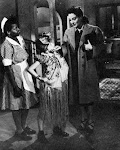.jpg)
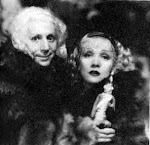+(3).jpg)
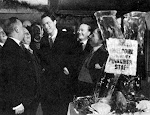+(4).jpg)
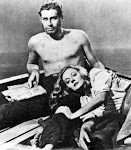+(7).jpg)
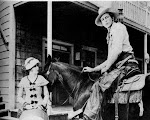.jpg)
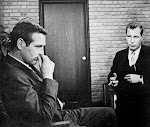+(6).jpg)
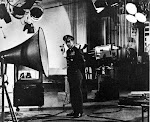+(5).jpg)
.jpg)






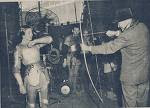
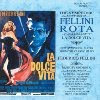

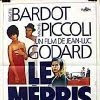

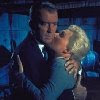

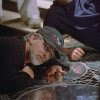







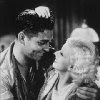


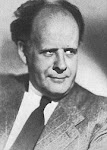

















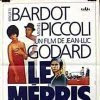


No comments:
Post a Comment